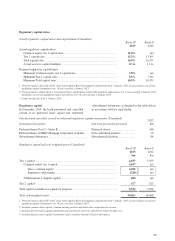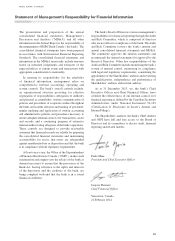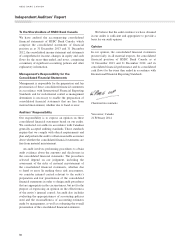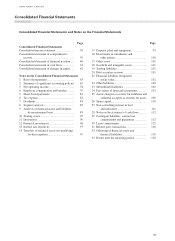HSBC 2013 Annual Report Download - page 49
Download and view the complete annual report
Please find page 49 of the 2013 HSBC annual report below. You can navigate through the pages in the report by either clicking on the pages listed below, or by using the keyword search tool below to find specific information within the annual report.
47
– the use of a one-day holding period assumes that all
positions can be liquidated or hedged in one day, which
may not fully reflect the market risk arising at times of
severe illiquidity, when a one day holding period may
be insufficient to liquidate or hedge all positions fully;
– the use of a 99% confidence level, by definition,
does not take into account losses that might occur
beyond this level of confidence;
– VaR is calculated on the basis of exposures
outstanding at the close of business and therefore
does not necessarily reflect intra-day exposures; and
– VaR is unlikely to reflect loss potential on exposures
that only arise under significant market moves.
In 2010, the HSBC Group’s policy regarding the
VaR calculation was expanded to include Idiosyncratic
Credit VaR (‘ICVaR’) from trading positions. ICVaR
captures the residual market risk of a specific issuer that
is not captured in the historical simulation credit VaR.
Effective 1 January 2013, the bank has included ICVaR
within the VaR information presented in the table and
graph below.
VaR disclosed in the table and graph below is the
bank’s total VaR for both trading and non-trading books
and remained within the bank’s limits. The increase in
VaR during July 2013, was due a temporary widening in
credit spreads effecting credit VaR.
Summary VaR information (Unaudited)
2013
$m
2012
$m
End of year ..................................................................................................................... 10 10
Average .......................................................................................................................... 12 16
Minimum........................................................................................................................ 89
Maximum ....................................................................................................................... 18 23
Daily VaR (Unaudited)
Q1
2012
Q2
2012
Q3
2012
Q4
2012
Q1
2013
Q2
2013
Q3
2013
Q4
2013
24
20
$m 16
12
8
Reputational risk
Reputational risk encompasses negative reaction
not only to activities which may be illegal or against
regulations, but also to activities that may be counter to
societal standards, values and expectations. It can arise
from a wide variety of causes including how we conduct
our business and the way in which clients to whom we
provide services conduct themselves.
Reputational risk is measured by reference to our
reputation as indicated by our dealings with all relevant
stakeholders, including media, regulators, customers
and employees. It is managed by every member of staff
and is covered by a number of policies and guidelines.
Each of the lines of business is required to have
a procedure to assess and address reputational risks
potentially arising from proposed business transactions
and client activity. Potential risks are directed to the
RMC for review. Where necessary, the RMC reports
reputational risks to the ARC quarterly.
Reputational risks are considered and assessed by
the ARC, RMC and senior management during the
formulation of policy and the establishment of our
standards. These polices are communicated through
manuals and statements of policy through internal
communications and training. The policies set out our
risk appetite and operational procedures in all areas of
reputation risk, including money laundering deterrence,
counterterrorist financing, environmental impact, anti-
bribery and corruption measures and employee relations.
























